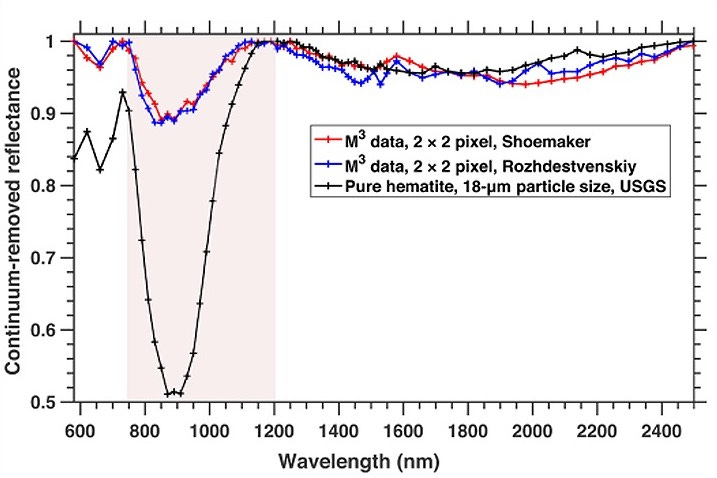Moon Monday Issue #21
Splash test of a future Moon capsule, Gateway lunar station engine tested, NASA strengthens collaboration with South Korea, oxidation on the Moon, and more developments in the lunar space.
Highlight

As part of an ongoing series of water impact drop tests with a mock version of the Orion capsule, NASA will be live streaming the next test on April 6. The aim of these drop tests is to better understand what the crew will experience when the 6350-kilogram spacecraft lands in the Pacific Ocean after an Artemis Moon mission. While NASA performed similar tests previously, the current tests use a new configuration that represents Orion’s final design. The tests are being conducted at the Hydro Impact Basin at NASA's Langley Research Center's Landing and Impact Research Facility.
Exploration
Maxar Technologies and Busek Co. successfully hot fired their 6-kilowatt electric propulsion engine, several of which will be combined with other, higher-power versions to make the NASA-led Gateway Moon orbiting station’s 50-kilowatt propulsion system. This most powerful electric propulsion system ever flown will be part of Gateway’s Power and Propulsion Element (PPE), which will be critical in delivering the Gateway to its lunar orbit, and providing maneuvering and attitude control. The hot fire tests were funded by NASA’s Space Technology Mission Directorate, and included multiple start-ups and shutdowns, and other flight-like scenarios to demonstrate the system is ready for 15 years worth of operations at the Moon. The Gateway’s foundational components––the PPE and the Habitation and Logistics Outpost––will be joined together on Earth before being launched by a SpaceX Falcon Heavy rocket no earlier than May 2024.

Related: NASA is establishing the Joint Advanced Propulsion Institute (JANUS) as the latest addition to their Space Technology Research Institutes. To help NASA utilize high power electric propulsion systems for human exploration of the solar system, JANUS will develop ways to overcome limitations in ground testing of such systems.
While we wait for NASA to down-select from three to two players by April end to further develop their Human Landing System to land astronauts on the Moon’s surface, researchers from Skoltech and MIT have published a mathematical analysis to find the most promising option for future Artemis landings assuming the Gateway lunar station as part of the architecture. They analyze one-stage, two-stage and three-stage landers––but not a Starship-like system––with varying propulsion systems, modeling over three dozen variants for an expedition of four astronauts spending around seven days on the Moon. Their analysis showed that for expendable landing systems like Apollo, the 2-stage architecture is indeed the most cost-effective due to lower total dry masses and propellant loads. However, with reusability, the 1-stage and 3-stage landers present themselves as better options with reduced long-term costs. Ultimately, the 1-stage reusable module running on liquid oxygen and liquid hydrogen won in terms of cost and performance for a sustained human lunar landing program.
With the possibility of now having small satellites to explore the Moon and beyond comes a big problem––their small size means their propulsion systems are less capable. An Italian engineer has proposed a new method for small satellites with monopropellant thrusters to enter lunar orbit using just a few grams of fuel.
Science
NASA’s collaboration with South Korea continues for the latter’s Korea Pathfinder Lunar Orbiter (KPLO) mission launching in August 2022. NASA has selected nine scientists to join the KPLO science team for three years, each of whom will work with at least one of the five instruments onboard the orbiter. The first NASA-South Korea collaboration for the orbiter was via the NASA instrument onboard called ShadowCam. It will map the Moon’s permanently shadowed regions using dim but detectable reflected light coming out of these regions, and will do so with at least 200 times more sensitivity than NASA’s LRO.
Oxidation is happening on the Moon! On a place that has no atmosphere, and is constantly bombarded by the chemically reducing solar wind. Scientists using data from the U.S. M3 instrument on India’s Chandrayaan 1 lunar orbiter have found ferric iron on the Moon, in the form of the mineral hematite. They found the hematite is present at high latitudes, primarily on the Earth-facing side of the Moon, and mostly on topographic highs towards the equator. Scientists thus think that when Earth passes between the Sun and the Moon, oxygen from Earth’s upper atmosphere is stripped off by the solar wind, and ends up on the lunar surface, eventually reacting with ferrous iron on the Moon’s nearside in a chain of reactions. The precise set of reactions can be confirmed when we collect samples and examine them in Earth labs.

Scientists think they now understand why the dark, mare areas on the Moon vary in their reflectivity with latitude. For a long time, scientists thought the constant stream of charged particles from the solar wind and micrometeoroid bombardment were the major factors in darkening of the lunar soil but couldn’t explain why it would change with latitude. Now a new study says that large solar energetic particle events, more energetic than the usual solar wind protons coming from the Sun, may cause sparking, melting and vaporizing of the lunar soil at a rate comparable to micrometeoroids. A combination of these two explains the changing reflectance of mare areas with latitude while also explaining how local magnetic anomalies present around swirls on the Moon may reduce this effect, causing them to appear brighter.
More Moon
Many people think that the Moon is just a gray ball of rock in the sky. Surprisingly, many scientists share this notion too. I once had a physicist tell me the Moon is boring. So I’ve written this article to summarize the immense scientific and exploration value of our Moon.
Thank you Alexandra Witze and satsearch for supporting me and powering this edition of Moon Monday.
Everyone, I’m publishing this one-of-a-kind Moon exploration newsletter for free, with no ads. And it will stay that way. If you like my work, support me to keep it going. Monthly supporters will be credited in future Moon Monday issues with a link to their website/social.
